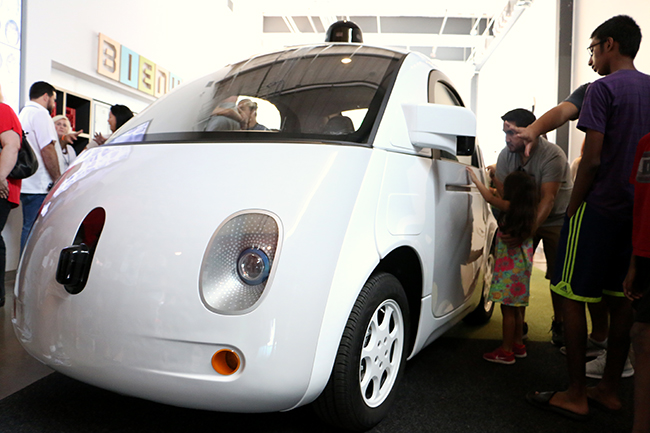Austin’s traffic sucks, but Google could be doing something to solve that. According to one 2014 study, the city’s traffic ranks worse than New York’s, but with the search engine company introducing new self-driving prototype cars, Google’s new technology could be the future for some commuters. For many students, traveling during peak hours becomes increasingly time consuming — a problem Google’s new self-driving technology can fix.
“My afternoon commute back home can take 45 minutes to an hour,” civil engineering senior Ahnaful Arephin said. “This can get infuriating at times when I have a lot to do that day. The concept of self-driving cars can potentially solve the problem during the peak periods of my commute.”
The private sector can pick up where the public sector has failed. Google’s self-driving car uses a combination of sensors and software to provide a full 360-degree view when driving.
Clifford Winston, senior fellow at the Brookings Institution, told Bloomberg TV that Google’s self-driving technology is the future of public transportation.
“The big breakthrough appears to be driverless cars, which would solve our problems by enabling cars to travel together — that would minimize the delays and also greatly improve on safety,” Winston said.
The failure of CapMetro has been seen across the city of Austin. Jace Deloney, chair of Austin’s Urban Transportation Commission, told The Atlantic about the city’s public transportation.
“Many people are surprised that Austin’s transit ridership has remained stagnant,” Deloney said. “While many transit agencies are seeing record ridership numbers, CapMetro ridership actually decreased.”
UT civil engineering professor Kara Kockelman researches the effectiveness of the new self-driving technology. She discovered that the technology would be able to save $5,000 per year per self-driving vehicle across safety, travel time, fuel efficiency and parking when compared to large buses.
“As soon as you put these big vehicles out there on limited lanes, you get more congestion,” Kockelman said. “Smart, smaller vehicles will be more useful, especially if we can fill more than one seat and have designated start and end routes. If I was a public transit provider, I would incorporate this technology.”
According to Kockelman’s micro-simulations, wide usage of the self-driving technology won’t be seen until 2045. Google still has to figure out how to make it inexpensive for commercial use. Even if UT-Austin commuters won’t see the technology any time soon, they might have a better future in traveling to and from campus, especially with the city’s problem with traffic.
Mubarrat Choudhury is a philosophy freshman. Follow him on Twitter @mubarratc.





















